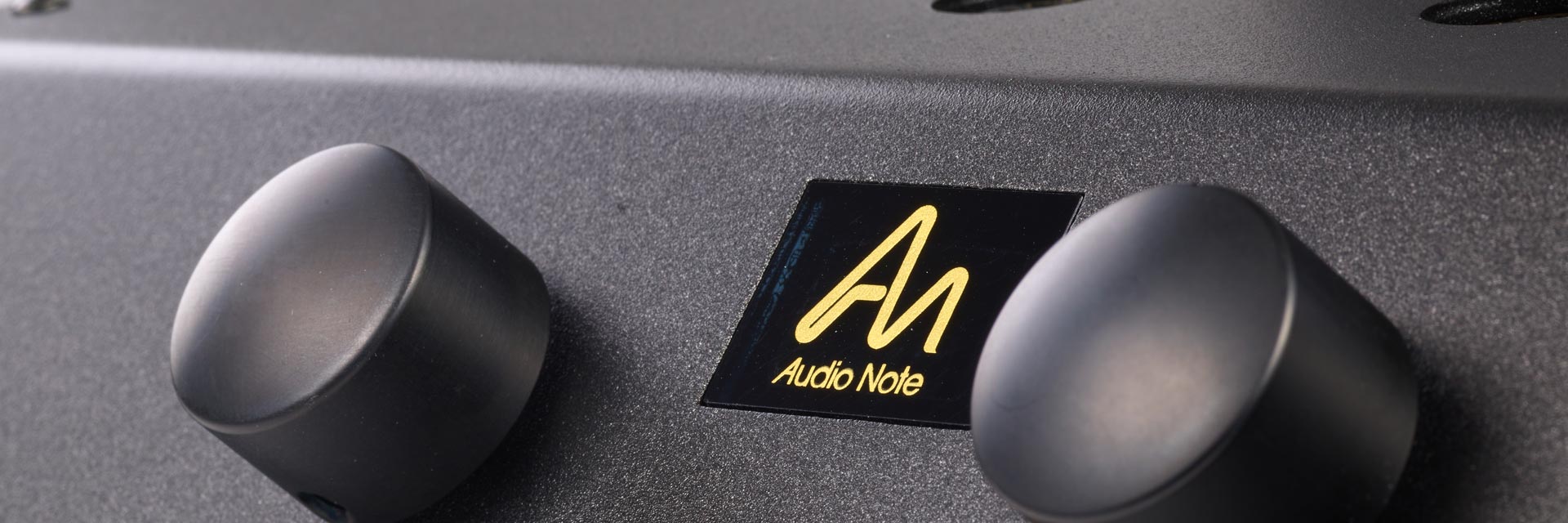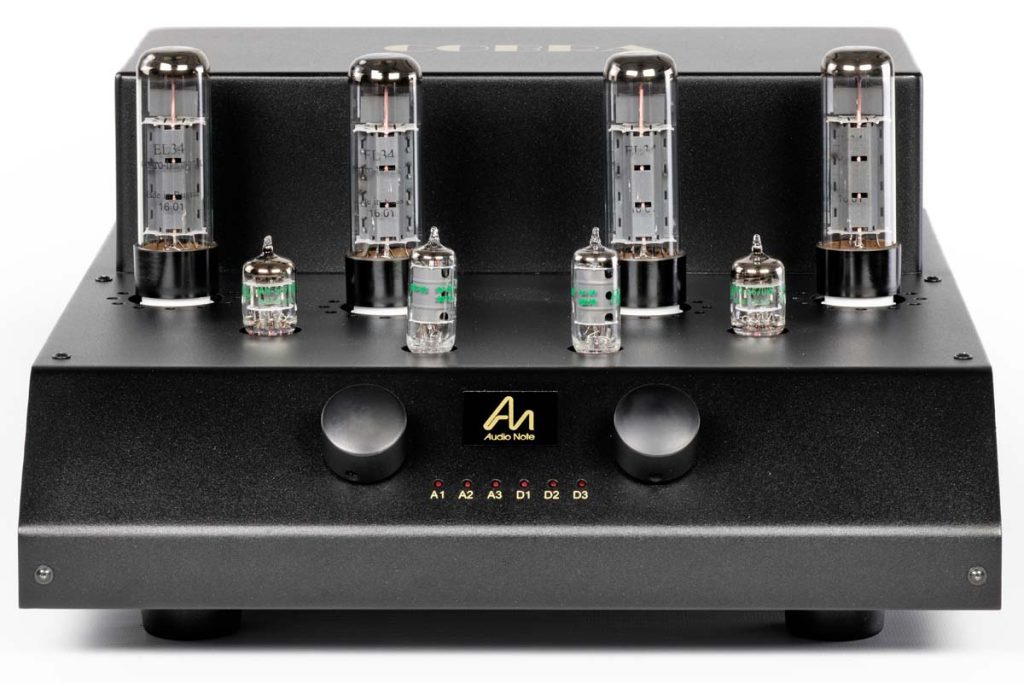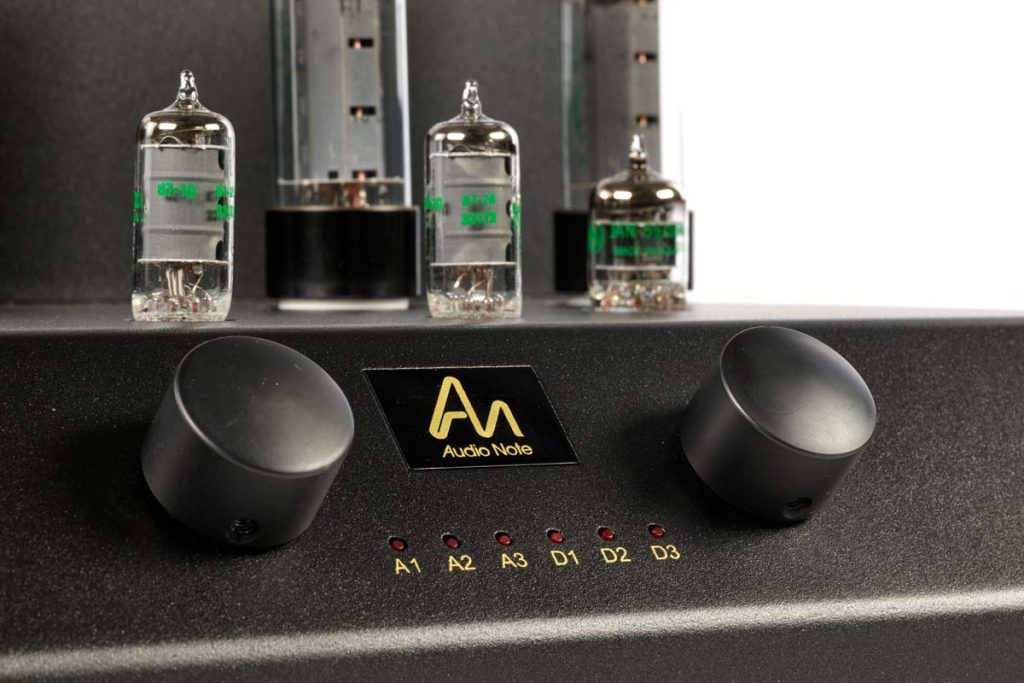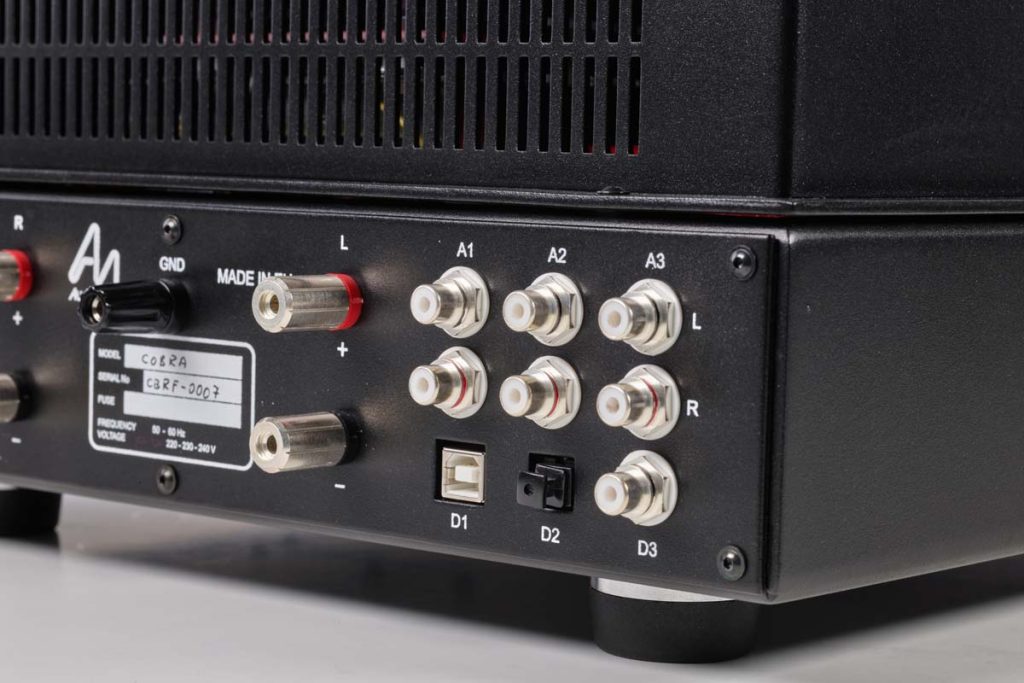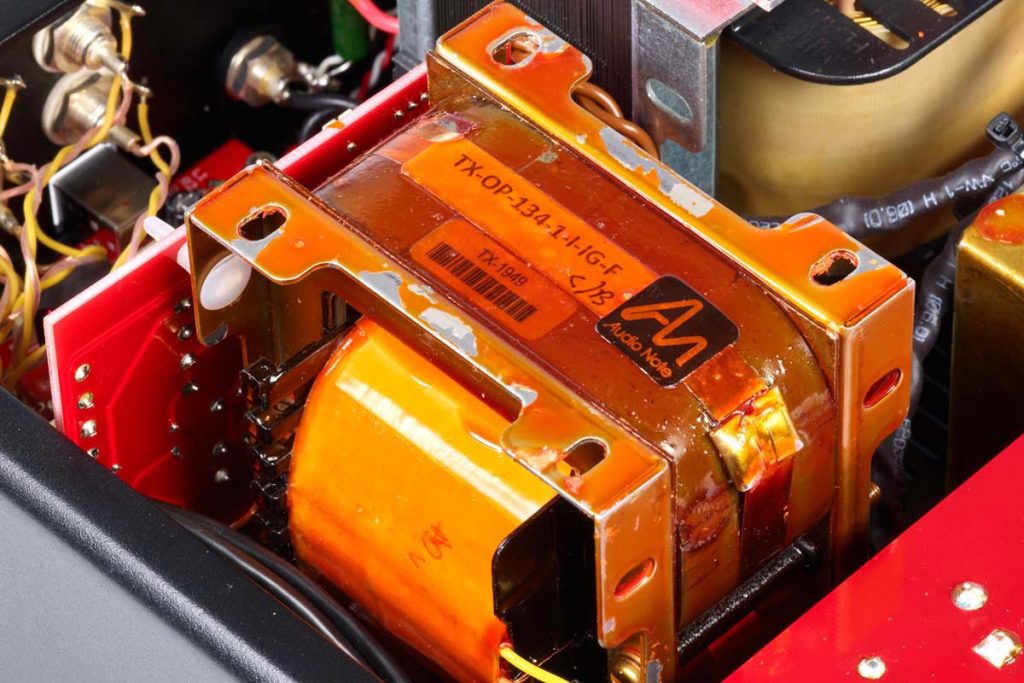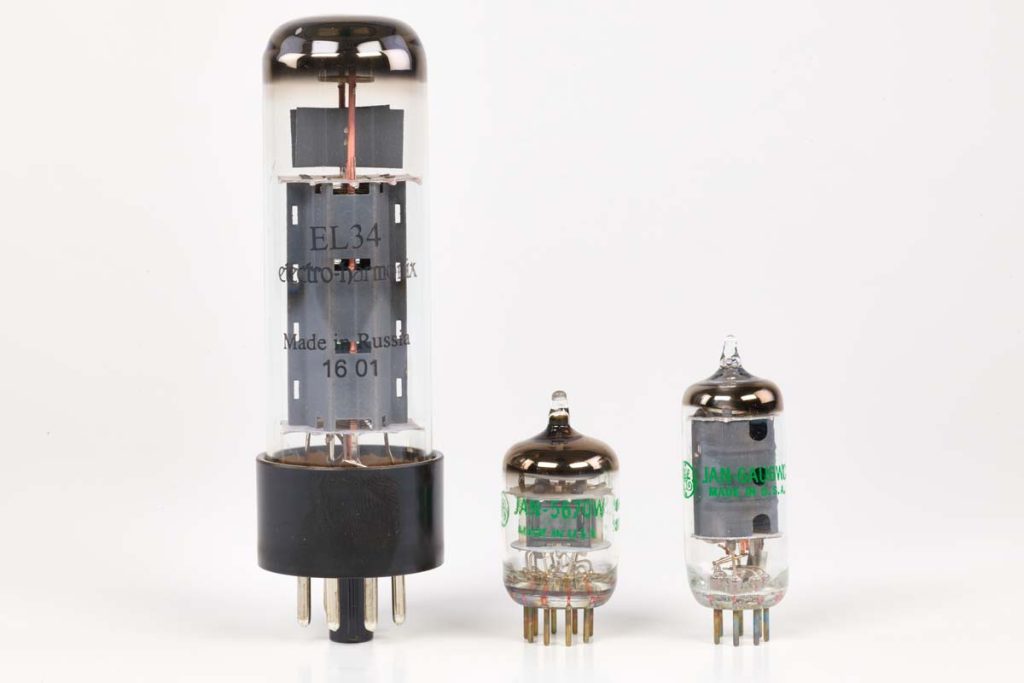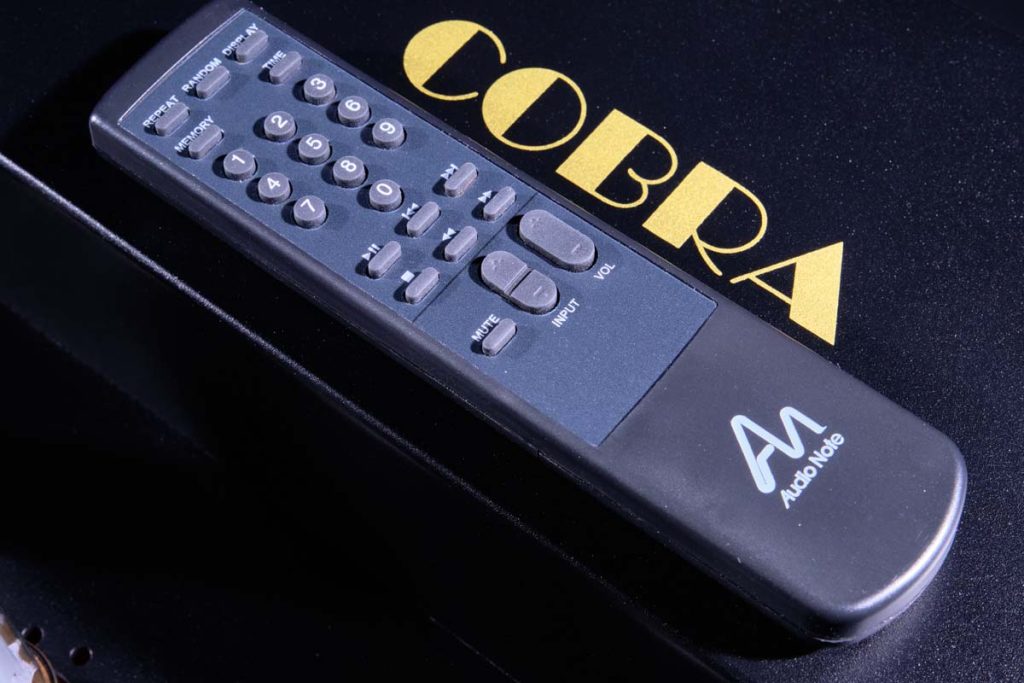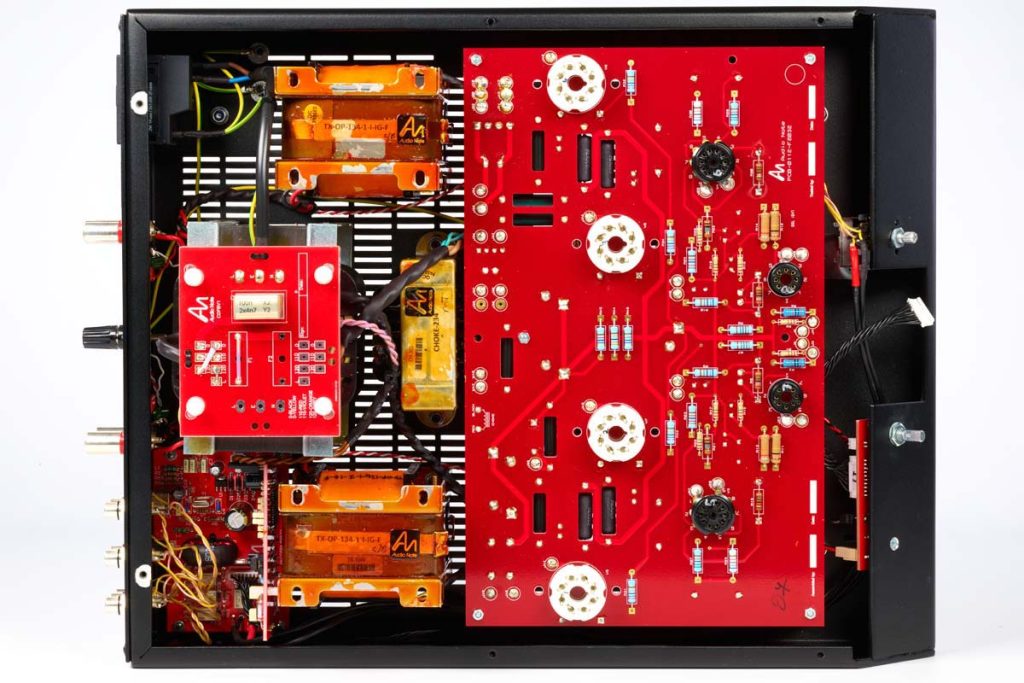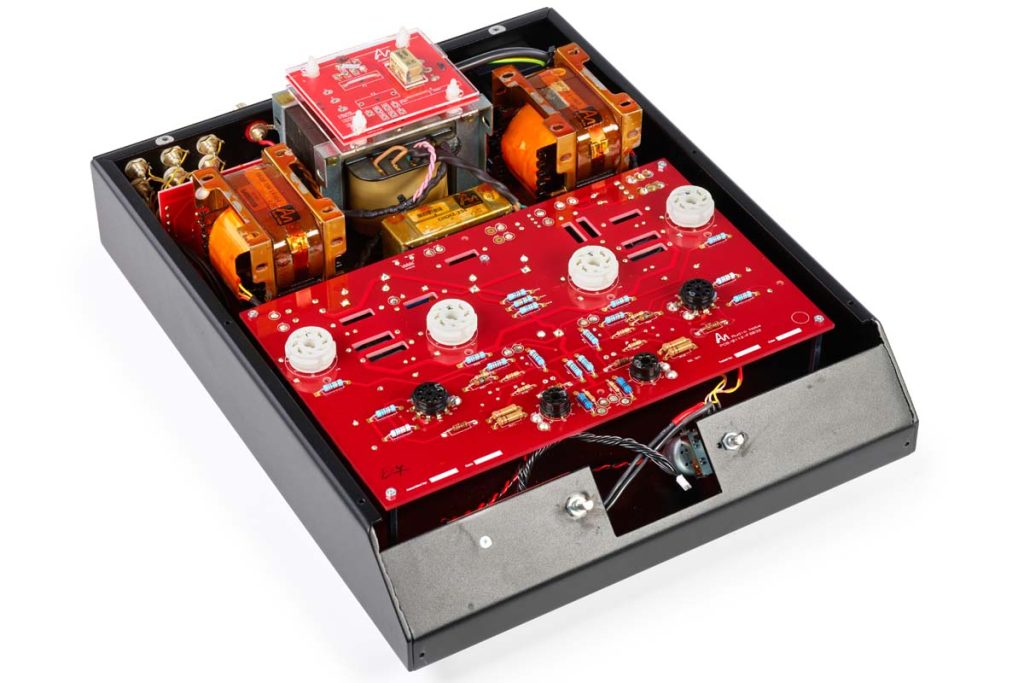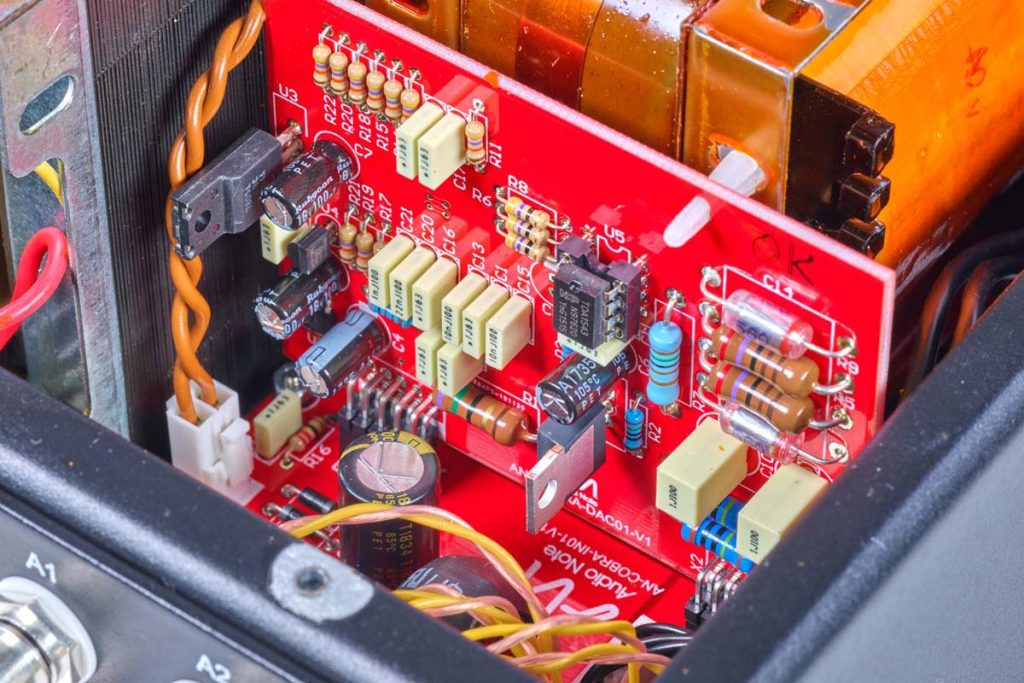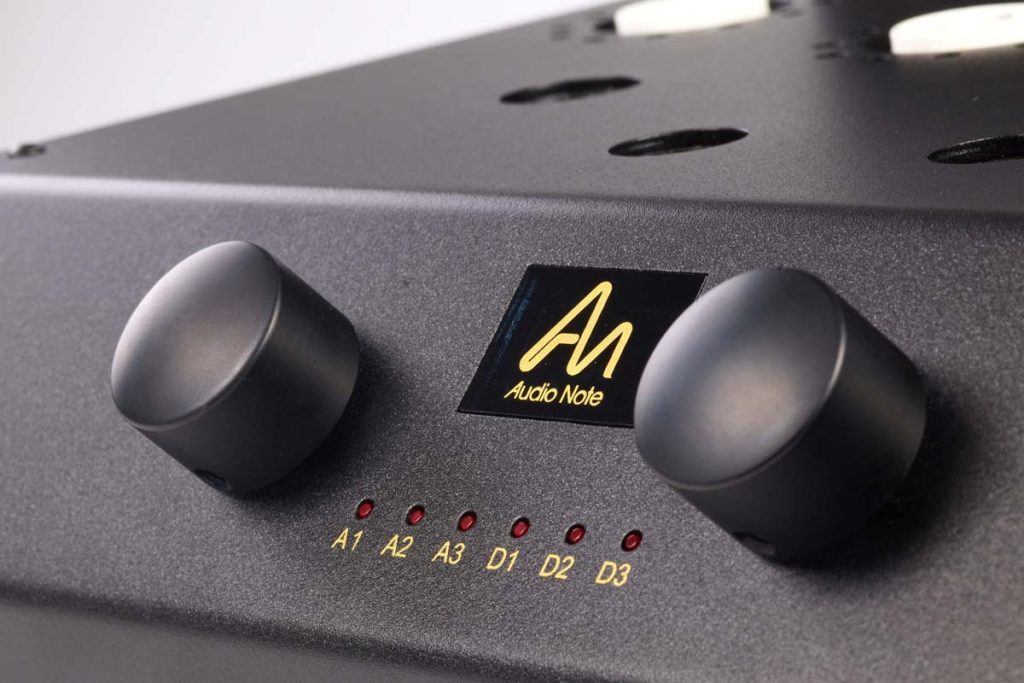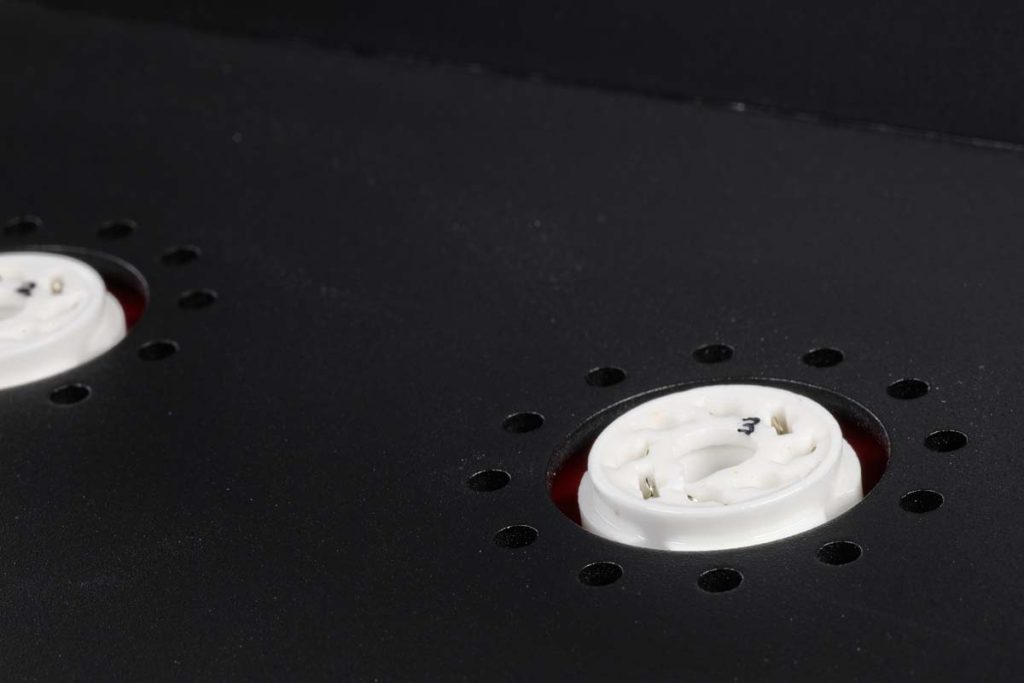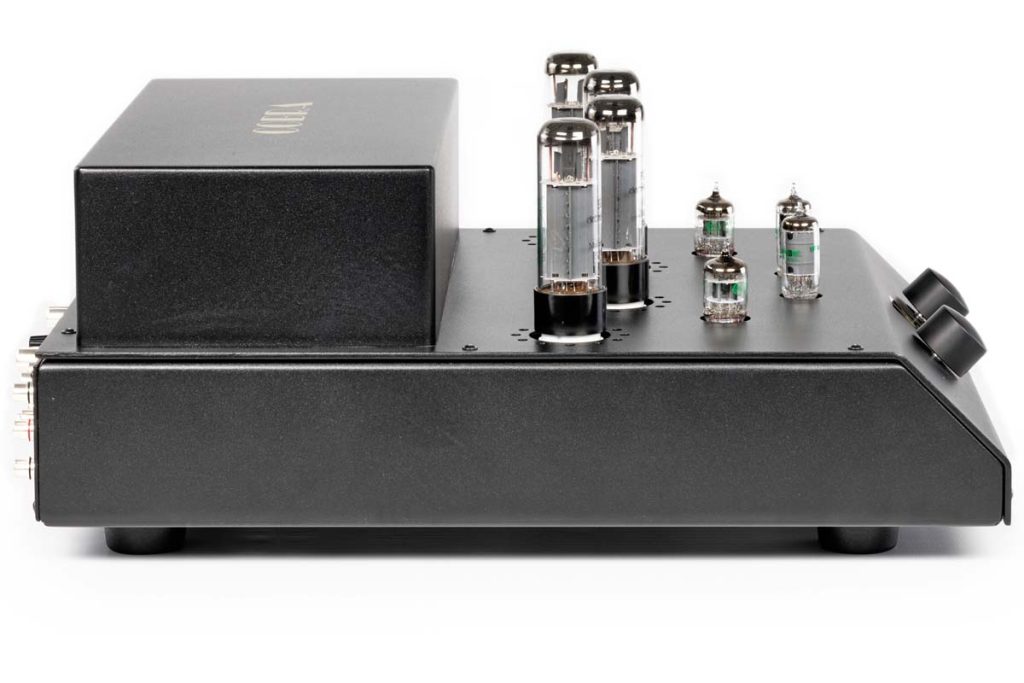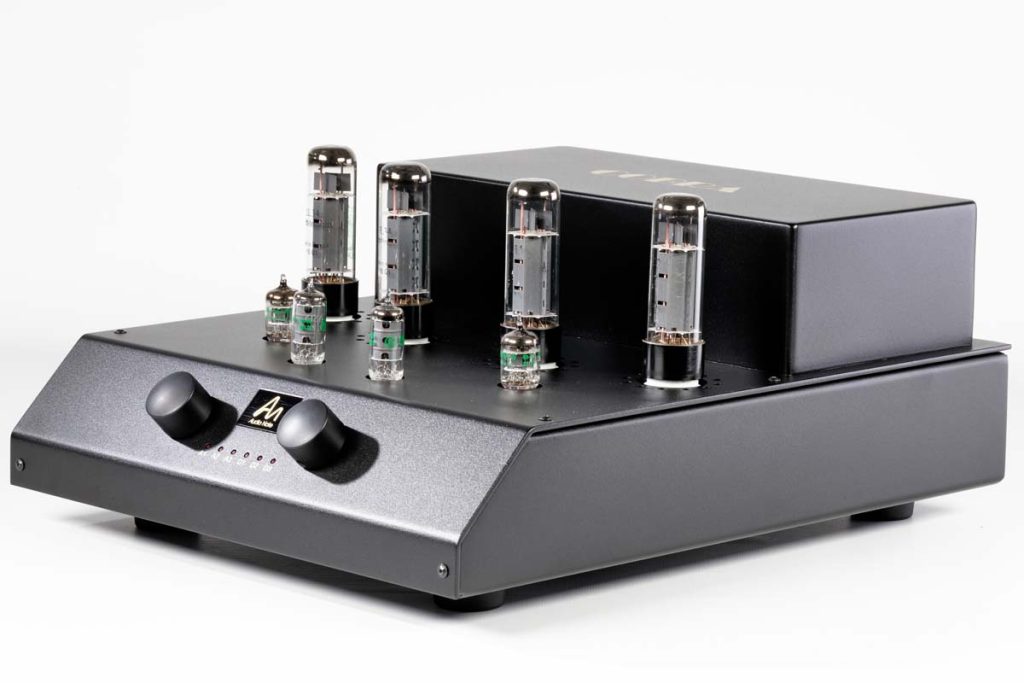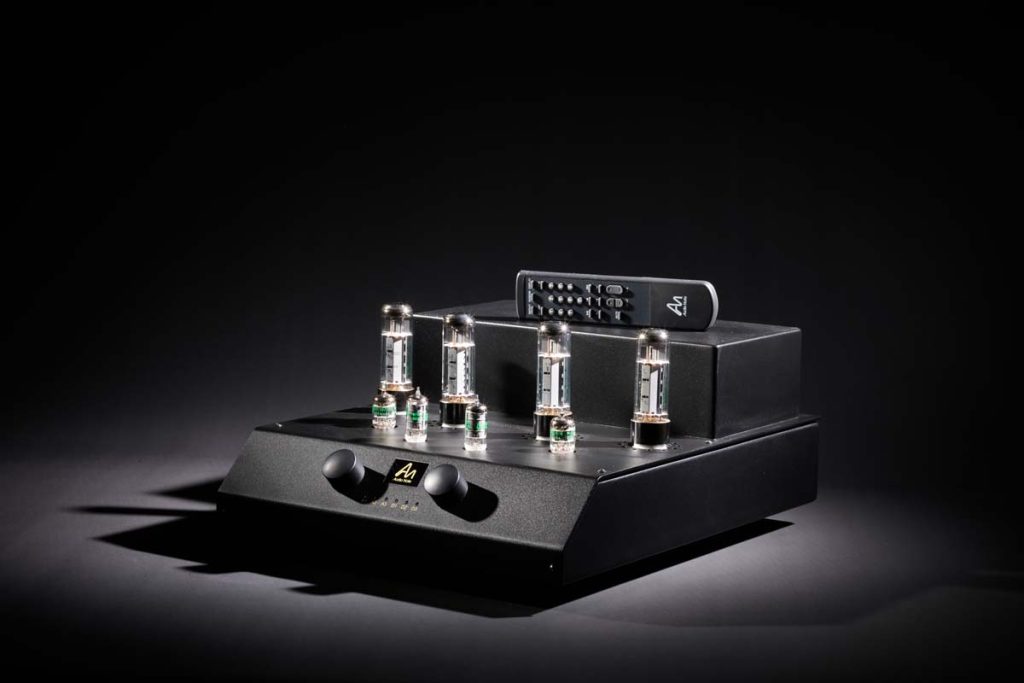Audio Note has rightly earned its place among luxury brands. But with a mid four-figure entry price, the long-awaited integrated valve amplifier Cobra has also sparked curiosity among music aficionados who normally wouldn’t be able to buy equipment from the British premium brand. In the end, is the device perhaps even too inexpensive?
Few other manufacturers have so resolutely worked their way up to legendary status in the field of tube-driven playback technology as Audio Note. Declared dead by many, tube technology just doesn’t seem to want to give up the ghost, and the amplifier-makers from England have been passionately making their own decisive contribution to this specialized area. Rarely does such agreement prevail — even among competitors — in an industry that inseparably melds technology and art. But who’d find that surprising, one might ask rhetorically: If a company applies this kind of relentlessness to designing its products both in terms of the components it uses to build them and the vertical range of manufacturing know-how it possesses, that company can hardly help but find itself at the top some day. In this way, Audio Note has grown synonymous with a particularly effusive form of development zealousness and can prove its success by simply pointing to the price tag. This, of course, makes it easy to bestow such accolades on their flagship amplifier, Ongaku, as “best integrated amplifier on the planet.” After all, just a few products end up in costing as much as the British valve legend — which also means only very few people have ever experienced it live. Exclusiveness is rare indeed! With the Audio Note Cobra, the Brits have launched a much more attainable piece that might nevertheless carry some of that Audio Note magic.
Peter Qvortrup and his team have been proving the nay-sayers wrong for quite some time now. With their many models priced in the mid-fourfigure range, they’ve been proving that embracing the art of development and, loosely worded, “having a clue about playing back music” are not the result of pure extravagance; rather, this can be explained solely by recognizing the British company’s ability to combine technical expertise with good ideas and especially subtle auditory alignment skills. Qvortrup is an outstanding example of this philosophy: This kind of success isn’t born on the drawing board or in any computer program. At Audio Note, the musical experience guides design, a process Picasso once so wonderfully described in these words: I don’t seek. I find!
Against this background, it seems almost sacrilegious to depict the new integrated amplifier Cobra only in terms of technical data. Yes, of course, a proper hi-fi journalist would carry out due diligence here; but in this particular case, focusing on the engineering details would do little to help us draw a conclusion about the result. A product photo or the technical features could even lead tube connoisseurs down the primrose path. Four visually tame EL34 pentodes glow in the power amplifier. They’re said to be reliable and clean, but also help produce a sound that’s somewhat “tedious.” No exaggerated vintage nostalgia to be found in the design either. So what, then, is new about this design? Or, to be even more blunt: You might even find it strange that an innovative company like Audio Note is pretty much the last one out there to launch an EL34 integrated amplifier on the market.
Beautiful functionality
Despite providing an initial impression of understated austerity, the Cobra does blend harmoniously and comfortably into everyone’s living space. Its simple, functional grace neither clashes with modern black-and-white ambiance nor with colorful, nostalgic opulence. It deliberately lacks chrome ornamentation and any hint of burl wood Mannerism! In contrast to the company’s higher-level OTO, the Cobra is deeper than it is wide, but it fits nicely into my equipment rack, which has a quite common depth of 47 centimeters. When viewed longitudinally, its case even reminds me a little of the “larger” Jinro, Tomei, and Ongaku. Source and volume controls are located on the device’s slanting front. The rear features three identical line inputs with silver-plated sockets as well as three digital connections for TOSLINK, coax, and USB-B, which holds the data cable. And with that, we’ve arrived at the Cobra’s first genuine special feature: a DAC unit that allows this model to process all imaginable binary sources of input. The developers opted for the proven Philips TDA 1543 chip. Operating at 16 bits and 48 kilohertz, it induces a bit of nostalgia, but does contribute significantly to the sound experience. This DAC chip has already garnered a legendary reputation from its use in the PlayStation 1, but Qvortrup and his team were hardly impressed by this: They made their selection on the basis of the results from countless listening sessions during the Cobra’s development.
The Cobra’s dark, silk-matte anthracite color prompted one visitor to my listening room to exclaim: “Hey, a stealth bomber!” Personally, I find it less dramatic than that. Its color and simplicity barely create any contrast to the adjacent iPhone or the streamer positioned one level down in the stand. In this regard, nearly all British hi-fi products have always looked modern.
A total of eight tubes protrude from the housing cover. The four EL34 power amplifier pentodes from Electro Harmonix are located as usual at the rear In front of them, two 6AU6 double triodes, seemingly almost tiny in comparison, are flanked by the only slightly larger 5670 driver pentodes. This selection may invoke surprise at first glance — after all, components of this type are usually combined with the popular preamp classics of the ECC family. But the background here may be that these tube types gained a solid reputation in the past for their use in jukeboxes or to power tube microphones due to their small size. These extremely reliable NOS types from General Electric (“Made in the U.S.A.”)are available in sufficient quantities and, above all, at low prices. In addition, they’re JAN (Joint Army Navy) versions that have been developed to meet the highest demands in terms of tolerances, robustness, and durability.
The developers tried to keep the retail price of the amplifier down by testing all kinds of standard transformers, but it didn’t work out. They were only satisfied after having extended their search into the pool of in-house hand-wound types associated with larger amplifier models. This certainly makes for a unique selling point for an amplifier of this class. The small remote control in a simple plastic housing may not be a gem, but it does allow source selection and volume control from a listening position, thus contributing to a pleasing level of comfort.
Explicit harmony
It’s hard to imagine just how excited a person, including even me, can get once an iMac is connected to a tube amp through a USB cable right before starting a listening test. The built-in DAC is the special feature that finally captured my curiosity — especially if you’re used to listening in a recording studio where newly mastered songs are rarely fed directly into a tube amp without a detour through an audio interface.
Here I need to explain that although I have many years’ experience as a hi-fi writer, my roots reach back to the area of production. I always subject my evaluation to the sound of the original because I’m usually already a “listener” when the music is still playing in front of the microphone. And the longer you carry on like that, the more archaic you become as a listener. Music then resembles sound waves in temporal dependency colored by character. An instrument or a voice, on the other hand, sounds only as pleasant as the musician or the surroundings in which the sound was once generated allow it to be. And, in my opinion, a playback system is only as good as its ability to reconstruct and reproduce all these properties especially harmoniously.
But when it comes to these crucial key indicators, tube audio gear is often subject to ridicule. Tubes are said to provide beautiful coloring, to be slow or to artificially distend the sound. Tube-powered amplifiers are at best good for aesthetes who enjoy easy-listening Muzak or nostalgics befogged by having indulged too much in their favorite red wine, so the saying goes. Whether this expresses prejudice or justified criticism should remain irrelevant at this point. The Cobra easily succeeds in liberating every “modern” and thus critical music listener from this conviction. The listening experience with the integrated British-made device was not only incredible because the amplifier rebuked all these prejudices, it also proved downright overwhelming and engaging in its accuracy.
In the far too short period of time that Audio Note’s Cobra enlivened my listening room, I happened to get a call from an experienced sound designer — someone who works in recording studios around the world to develop sounds and noises that are either inserted into movies to emphasize certain acoustic moods or cut in imitations of certain original sounds into recordings or dubbings. And these days nobody in the studio scene happens to be more critical than a sound designer. The reason he called me was to tell me he’d just returned from a studio job in Tokyo and had come across an amplifier there that had brought even him — an old recording hand — to his very knees. When I asked him about the manufacturer of this marvel, he replied: “I don’t know! It was a little tube amp called Cobra.” Sometimes things just happen! Why did I take the long way ‘round, you might ask. Of course, I could tell you now that the Cobra sounds so beautiful that I’ve once again rediscovered my entire music collection. I could celebrate its ability to play in a league that makes many competitors look ordinary. And I could praise its firm, imperturbably thundering bass foundation or the resolution it produces in the high frequency range. All of this would correctly describe what it’s all about; but it wouldn’t do justice to the pivotal experience: Frequencies and impulses rendered in the correct chronological order — that’s what counts! My sound designer friend found the Cobra could release torrents of enthusiasm, especially because it reproduced exactly what occurred in terms of timbre and timing in front of the microphone. In addition, it sounds almost identical at any volume. It’s neither thinned out and lifeless when you kick back to enjoy music, albeit very quietly, at night, nor bloated and booming at higher levels as is typical for tube amplification. This is, by the way, one reason why tube amplifiers with this kind of price tag usually don’t make their way into recording studios. Since I often listen at quiet volumes, I’ve always longed for a button on valve amplifiers that offer a “mild” loudness function.
When idling, the Cobra happens to not only remain quiet like most of its competitors, but literally dead silent. There’s no humming, no cracking noise — not one bit. If there’s one drawback, it’s the fact the Cobra only starts to perform at full power after having reached operating temperature. This, however, follows after a warm-up period of about half an hour. It always seems to straighten up the music. Sounds and grooves are effortlessly arranged within frequency and time in such a way that the accuracy in carving out detail becomes eminently apparent even in complex orchestral arrangements or in fat electric guitar thunderstorms. I deliberately describe this sensory experience in visual terms: One can almost see the orchestra, the position of each violin, where the drummer has placed his drum set.
The maturity of these capabilities may be even more impressive with the larger Audio Note amplifiers. Though I listened to the Ongaku in a trade show demo, I’m not able to evaluate this since I have far too little experience with such products. In any case, throughout the entire period I was allowed to enjoy the amplifier, I couldn’t identify any shortcomings. With its 28 watts per channel, it was powerful enough to manage the 25 square meters of my listening room. And, to my surprise, it appeared to be patient enough to handle any combination of speakers I could think of, including the B&W’s 805 monitors in my studio and some old Saba Greencones as well as small Auratone full-range speakers. And it did it brilliantly. Those days are behind me when I would have bought an amplifier to then spend five years looking for the right speaker. I want to have hassle-free fun when listening to music while simultaneously knowing that the source events and, above all, the timing are in their right places. And this is exactly the prime discipline in which the Cobra feels at home: This amplifier steps out to conquer high-end territories with almost playful ease and without taking any detours.
I only want to mention that the built-in converter has made me a streaming aficionado. No matter whether operating the top-class JRiver or using iTunes; All audio formats were simply fun to listen to through this amplifier. After a few minutes, I completely forgot about the seemingly antiquated bandwidth of the DAC chip. I was even able to enjoy my former bogeyman MP3, as the British amp meets the esprit and character of the songs here as well. While using top-level formats like FLAC, I hardly saw a reason to continue operating my old Sony SCD-1 vault. And that’s a small miracle!
Summary
To classify the Cobra as a mere downgrade product within the portfolio of the British hi-fi equipment manufacturer would fall far short of the mark. Although it doesn’t live up to the extraordinary vertical range of manufacturing know-how exhibited by its big brothers, it appears to be a convincing development in and of itself as a proven power amplifier. It draws its genuine persuasive nature above all from the fusion of top development expertise and technical accuracy. Valves, D/A converter, transformers — everything was carefully fine-tuned and guided to perfect harmony. The result is a performance rarely seen in this price range.
Accompanying equipment
CD players: Sony SCD-1 | Digital sources: iMac, Steinberg Cubase 10, iTunes | Integrated amps: Octave V-40, Lua 6060, Accuphase E-370 | Loudspeakers: B&W 805, Dynaudio Contour 20, Yamaha NS-10, Auratone Super Sound Cube | Cables: Audio Note AN-VX | USB: AQVOX | Power bar: Ensemble Power Point, Feldmann mains balancer
Integrated amplifier
Audio Note Cobra
Concept: integrated valve amplifier with D/A converter | Valve complement: 4 x EL34 (power amp valves), 2 x 6AU6 (double triodes), 2 x 5670 (driver pentodes) | Analogue connections: 3 x Aux In (silver-plated RCA sockets) | Digital connections: USB-B (16 bit/48 kHz), Toslink (24 bit/96 kHz) and coax (24 bit/176 kHz) | D/A converter: Philips TDA1543 (16 bit/48 kHz), the signals from Toslink and coax are downscaled for the DAC | Input impedance: 100 kΩ | Input sensitivity: 300 mV | Channel equality: ±0,3 dB | Power rating (4-8 Ω): 28 W per channel (Class A push-pull) | Other features: remote control | Dimensions (W/H/D): Matte black | Dimensions (W/H/D): 34/45/18 cm | Weight: 13.6 kg | Warranty period: two years | Price: about €3,950
Audio Note (UK) Ltd.
Viscount House, Units C, D & E, Star Road
Star Trading Estate
Partridge Green, West Sussex, RH13 8RA
United Kingdom
Tel: +44 (0) 1273 830800

